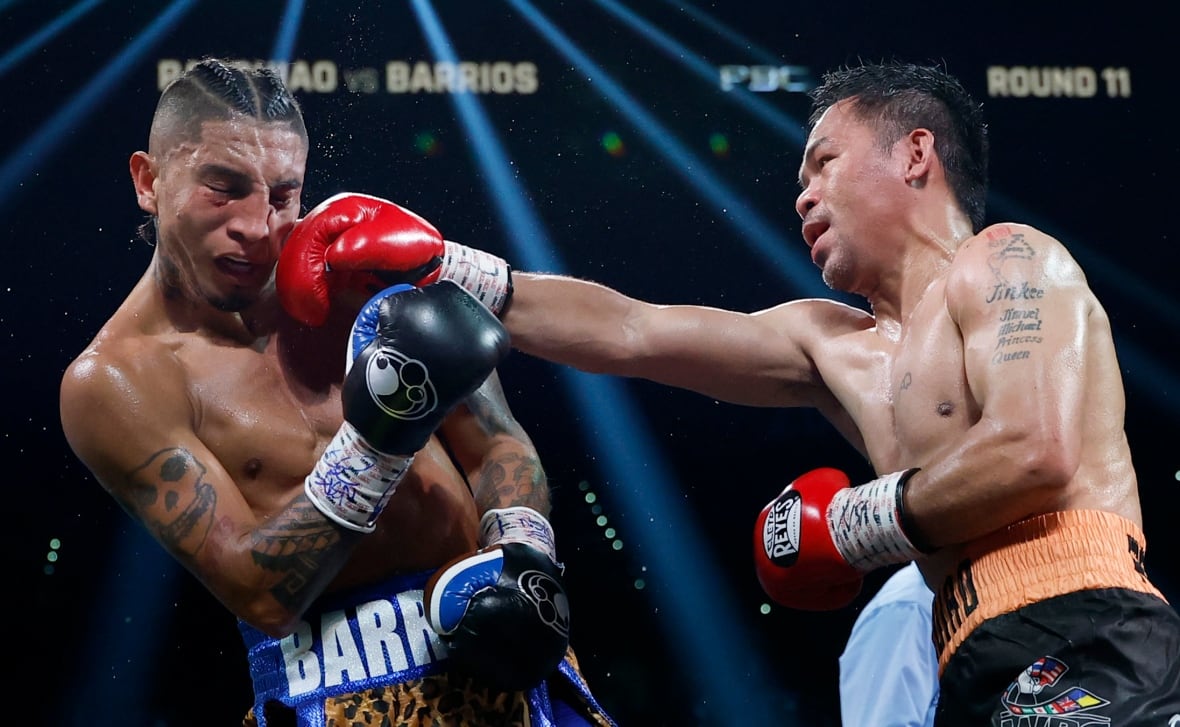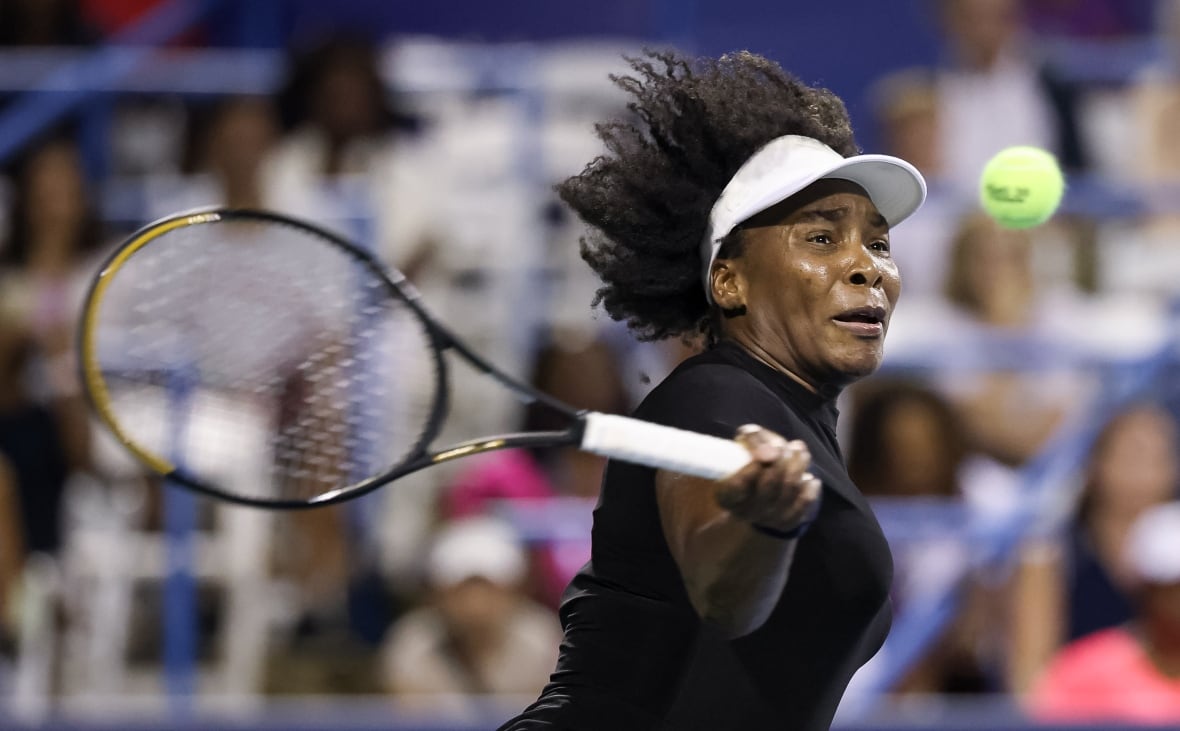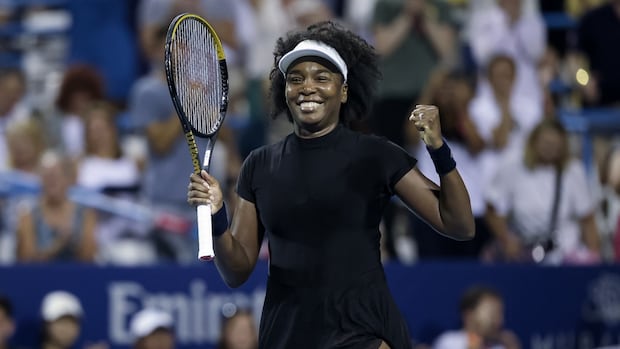[
Eight-division world boxing champion Manny Pacquiao used ring I.Q. and boxing geometry to overcome height and reach deficits in his title fight against Mario Barrios, earning a controversial draw against a bigger, stronger, harder-hitting opponent.
And if you think we’re re-heating headlines from the Pac Man’s late-2000s heyday, think again. That bout happened last Saturday in Las Vegas. Barrios, the World Boxing Council welterweight champion, is 30. Pacquiao, who last fought in August 2021, will be 47 in December. If he had edged out one more round on two judges’ scorecards, he’d have become the first boxer in history to win world titles in four different decades. Even if he didn’t defeat Barrios, Pacquiao earned a victory over age and expectations.
Three days later Venus Williams, 45, ended two year layoff from pro tennis, entered the D.C. Open as a wildcard, and dispatched Peyton Stearns, a player roughly half her age, to reach the round of 16.
These back-to-back triumphs for 80s babies offer more than a glimmer of hope for those of us old enough to wake up with aches we can’t explain. They’re more like a beacon, and a compelling argument against one of the most rock-solid axioms in sport and life. If time really is undefeated, how do you explain this weekend?
Easily.
But if we look at Pacquiao and Williams’ performances as self-awareness success stories, and case studies in the value of choosing your opportunities wisely, we might learn something from these last few days.
First, let’s acknowledge that Pacquiao and Williams defied recent sports medicine trends just by reaching the arena in one piece. We just finished watching an NBA Playoffs in which two star players younger than age 30 – Tyrese Haliburton and Jayson Tatum – suffered a ruptured achilles tendon, an injury we normally associate with advanced age and high mileage. The third NBA star to tear his achilles tendon this post-season, Damian Lillard, turned 35 last week.
Age matters at the extremes
Against the backdrop, watching Pacquiao and Williams roll back the odometer looks even more impressive. They both turned pro during Bill Clinton’s first term as president. If you can’t remember that far back, that’s the point. This kind of longevity might not be unprecedented, but it’s rare.
Let’s also keep in mind that age matters at the extremes. It’s why a 9.8 sprinter can stroll unrecognized through most U.S. cities, but a high schooler who breaks 10-flat becomes a minor internet celebrity. And it’s why masters sports group athletes into cohorts that span five years, accounting for a sort of reverse puberty. In terms of strength and muscle mass, 55 and 60 years old are as different as 15 and 20. Age classifications matter, so when middle-aged athletes enter open competition, we’re right to view their performances through the prism of their age.
That’s why so many people are classifying Pacquiao’s draw against Barrios, a competitive fight by the stats, as a robbery. Barrios landed more punches, but if you think the intangibles favoured Pacquiao it’s reasonable to see those two factors evening out to produce a draw.

But Pacquiao, as we noted, is 46. At that age, even people who train daily are more likely to have arthritis than visible abs. Barrios, a top-ranked welterweight 16 years Pacquiao’s junior, should have handled him, but Pacquiao kept rallying and landing punches and weathering Barrios’ offence. It wasn’t the fight most of us envisioned.
There’s a difference, however, outperforming expectations, which Pacquiao did, and winning a fight, which he didn’t. There’s also a gap between winning a bout, which one judge said Barrios did, and winning convincingly. But if you factor in Pacquiao’s age, simply keeping pace with Barrios seems like a win.
With Williams, there’s no “seems like.” She took the first set 6-3, and the second 6-4, so there’s nothing to debate, not even whether Peak Venus Williams would have dispatched Stearns even more quickly. We’re still discussing an all-time great, after all.
Timing is everything
But this weekend’s results aren’t evidence that Pacquiao and Williams have figured out how to freeze time. It’s the opposite. Their success shows they’ve made smart adjustments for the aging process.
You’ll note, for example, that Pacquiao’s surprise draw and Williams’ convincing win came on night one, fresh off long layoffs. Given what we understand now about the art, science, and importance of recovery for older athletes, we know Pacquiao and Williams entered these contests with fully charged batteries, and would likely feel different on the last day of a long season.
Which is to say, for those of us trying to perform physically even though we’re closer to 50 than we are to 40, timing matters.

And so do opponents. Stearns is an NCAA champ, which makes her several echelons better than the best tennis player reading this column. But she also competes in a sport where most elites turn pro instead of playing in college. By her age, Williams was already a nine-year veteran of the WTA tour. Williams is on the downside now, but even her current plateau hovers above most people’s ceiling.
As for Pacquiao – he chose Barrios for a reason. Among the current champions at 147 pounds, Barrios has the most glaring shortcomings. Defence is one, and a lack of home-run punching power is another. On fight night we learned he was also startstruck, reluctant to let his hands go when he had Pacquiao stunned, and willing to abandon half his offence when Pacquiao complained to the referee about body punches that appeared legal. Pacquiao made it clear that he didn’t want Barrios punching him in the stomach, and Barrios, for large stretches of the fight, complied.
If Pacquiao had chosen Brian Norman Jr., the hard-hitting W.B.O. champion, for his comeback fight, we’d be looking at one of two outcomes – peeling Pacquiao off the canvas or retrieving him from the rafters. Norman hits that hard.
But if you’re staying active deep into middle age, and trying to find inspiration in Pacquiao and Williams’ success, that’s the point. It’s not just okay to scale back your goals and challenges. It’s smart.
Pacquiao is as unlikely to unify the welterweight title as Williams is to capture another Grand Slam, but it doesn’t matter. They’re still overperforming relative to the restraints that age places on all of us, and highlighting one more distinction few of us had considered until now.
The one between aging gracefully and aging forcefully.
Time will remain undefeated, but Pacquiao and Williams are showing us how to land some body blows before the final bell.
